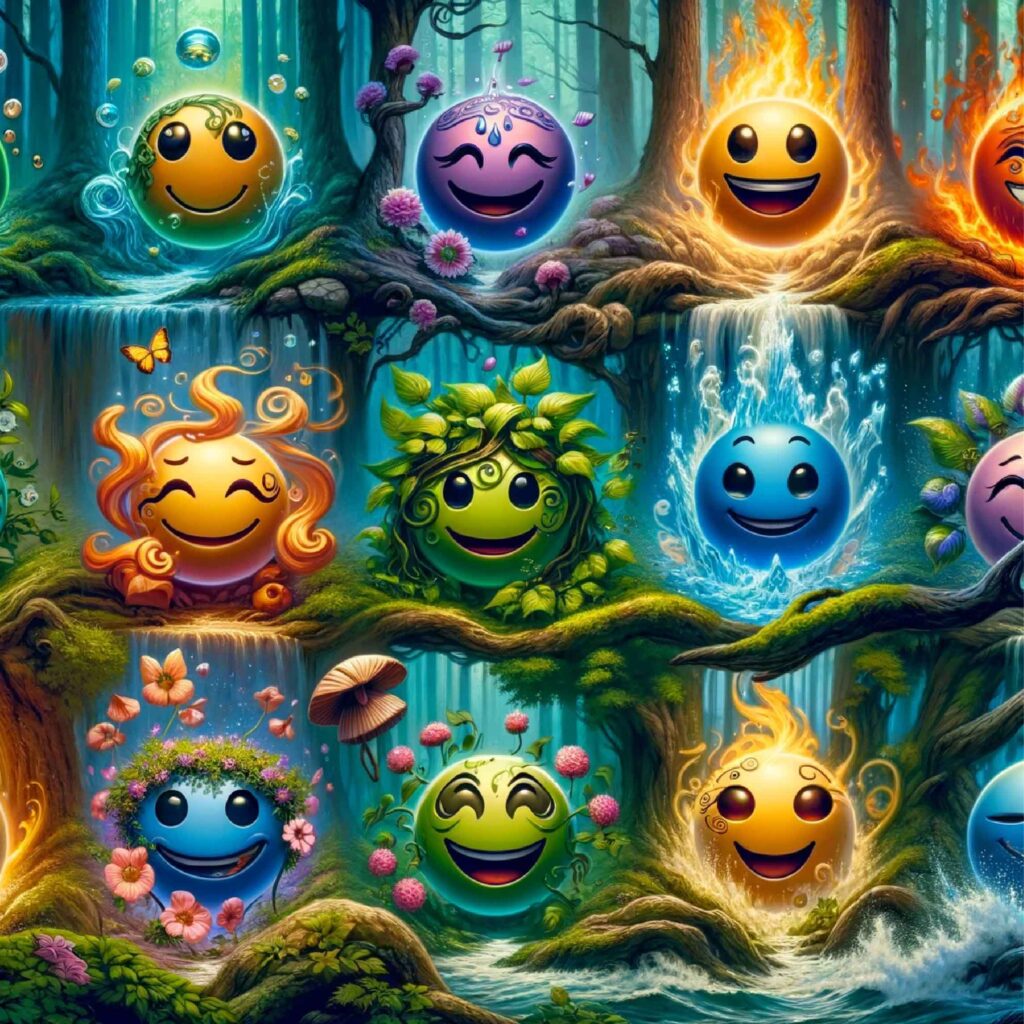The Evolution of Symley

From Typewriter to Digital: A Brief History
The journey of symley from typewriter characters to the colorful emojis we use today is a fascinating tale of creativity and technological advancement. It all began in the 1980s when computer scientists looked for ways to convey emotion in text-based online communication. The simple yet expressive “:)” and “:(” emerged as early solutions, laying the groundwork for the emoticons that would follow.
Emoticons: The Beginnings of Text-Based Emotion
Emoticons, combining the words “emotion” and “icon,” utilize keyboard characters to represent facial expressions. They became a creative way to add emotional nuance to messages, ranging from happiness (:) to sadness (:( ), wink (;-)), and more. Types and Meanings of emoticons have grown, each serving to convey a specific emotion or reaction without the need for words.
The Rise of Emojis: A New Visual Language
The transition from emoticons to emojis marked a significant evolution in digital communication. Originating in Japan in the late 1990s, emojis are pictorial representations of emotions, objects, and symbols. Unlike emoticons, emojis are standardized across platforms, ensuring a wink, a smile, or a heart looks the same on any device.
Differences Between Emoticons and Emojis
While both emoticons and emojis serve to convey emotion in digital messages, their main difference lies in their form. Emoticons are text-based, using keyboard characters, whereas emojis are visual images standardized across platforms. This distinction has allowed emojis to become a universal language in digital communication.
How Symley Enhance Digital Communication
Expressing Emotions in Texts and Emails
Symley play a crucial role in adding emotional depth to digital communication. They help overcome the limitations of text-based interaction, where tone and body language are absent. By incorporating symley, senders can convey feelings of joy, sarcasm, sadness, and more, making their messages more understandable and relatable.
The Impact on Social Media Interactions
On social media platforms, symley are instrumental in shaping interactions. They can turn a simple message into a vibrant expression of emotion, humor, or support. Cultural Variations in Symley also influence how emotions are expressed and interpreted across different regions, adding a layer of complexity to digital communication.
Understanding Context and Misinterpretations
While symley enhance communication, they also come with challenges. Misinterpretations can occur, especially when different cultures or age groups interpret symley in varied ways. Recognizing the importance of context and choosing symley wisely can mitigate misunderstandings.
Creating Your Own Symley
Designing Emoticons with Keyboard Characters
Crafting your own emoticons is a creative way to personalize your digital messages. By experimenting with different keyboard characters, you can create unique expressions that reflect your personality or the specific emotions you wish to convey.
Crafting Custom Emojis
For those looking to take their digital expressions to the next level, creating custom emojis is an exciting option. Numerous Tools and Platforms are available that allow users to design and share their own emojis, offering a new dimension to personal and group communication.
The Future of Symley
As technology continues to evolve, so too will the world of symley. Technological Advances and AI in Emoji Creation are expected to bring about more personalized and dynamic emojis, further enriching our digital conversations. The future of symley in digital communication looks bright, with these symbols set to become even more integral to our online interactions.
Emoticons and Emojis Around the World
The use and interpretation of symley can vary greatly across cultures, adding a fascinating layer of diversity to digital communication. Understanding these Cultural Significances and Variations is key to using symley effectively in a global context.
Best Practices for Using Symley
While symley are a valuable tool in digital communication, there are best practices to consider. Knowing When to Use and When to Avoid symley can help maintain the appropriate tone, especially in professional settings. Additionally, understanding your Audience and Platform is crucial to ensuring your use of symley is appropriate and effective.
Symley, whether in the form of emoticons or emojis, have become an essential part of how we communicate in the digital age. They add depth, emotion, and clarity to our messages, bridging the gap where words alone might fail. As we continue to navigate the ever-evolving landscape of digital communication, the creative and thoughtful use of symley will remain a key tool in expressing our emotions and connecting with others across the globe.
Frequently Asked Questions About Symley:
What is the difference between an emoticon and an emoji?
The primary difference lies in their composition and variety. Emoticons are created using keyboard characters to form representations of facial expressions, conveying emotions like happiness 🙂 or sadness :(. Emojis, on the other hand, are pictorial symbols that represent not only emotions but also objects, animals, weather conditions, and much more. Emojis are standardized across different platforms, ensuring that they appear the same no matter where they are used.
How can I create my own custom emojis?
Creating custom emojis can be both fun and expressive. You can use various online tools and platforms, such as Bitmoji or Emoji Maker, which allow you to design emojis by choosing from different facial features, hairstyles, and accessories. Additionally, some messaging apps provide features to create emojis directly within the app, giving you the opportunity to personalize your communication even further.
Are there any cultural differences in the use of symley?
Yes, cultural differences significantly influence how symley are perceived and used. For instance, in Japan, the use of emojis is highly prevalent in digital communication, with a wide array of emojis available that are specific to Japanese culture. Furthermore, certain emojis or emoticons might carry different meanings in different cultures, making it important to be mindful of the recipient’s background when using them in communication.
How do symley impact the tone of digital communication?
Symley can greatly impact the tone of a message, adding warmth, humor, sarcasm, or other emotions that might be difficult to convey through text alone. They can soften a message that might otherwise seem too blunt or harsh, or they can add a playful tone to casual conversations. However, it’s important to use them appropriately, as overuse or misuse can lead to misunderstandings.
Can the use of symley be considered unprofessional?
The appropriateness of using symley in professional settings largely depends on the workplace culture and the context of the communication. In more formal or traditional industries, using symley might be frowned upon. However, in creative industries or more informal settings, a judicious use of symley can help convey friendliness and approachability. It’s crucial to gauge the recipient’s preferences and the overall tone of the professional environment before including symley in work-related communication.
What are some tips for using symley effectively in digital communication?
- Know your audience: Tailor your use of symley based on the recipient’s likely reception and the context of your relationship.
- Consider the platform: The use of symley might be more acceptable on certain platforms (like social media or messaging apps) compared to others (such as professional email).
- Use sparingly: Overusing symley can dilute their impact and potentially make your message seem less serious or professional.
- Be mindful of misunderstandings: Choose symley that clearly convey your intended emotion to avoid potential misinterpretation.
- Stay updated: Emoji meanings can evolve, and new ones are constantly being added. Keep up with current trends to ensure you’re using them appropriately.




